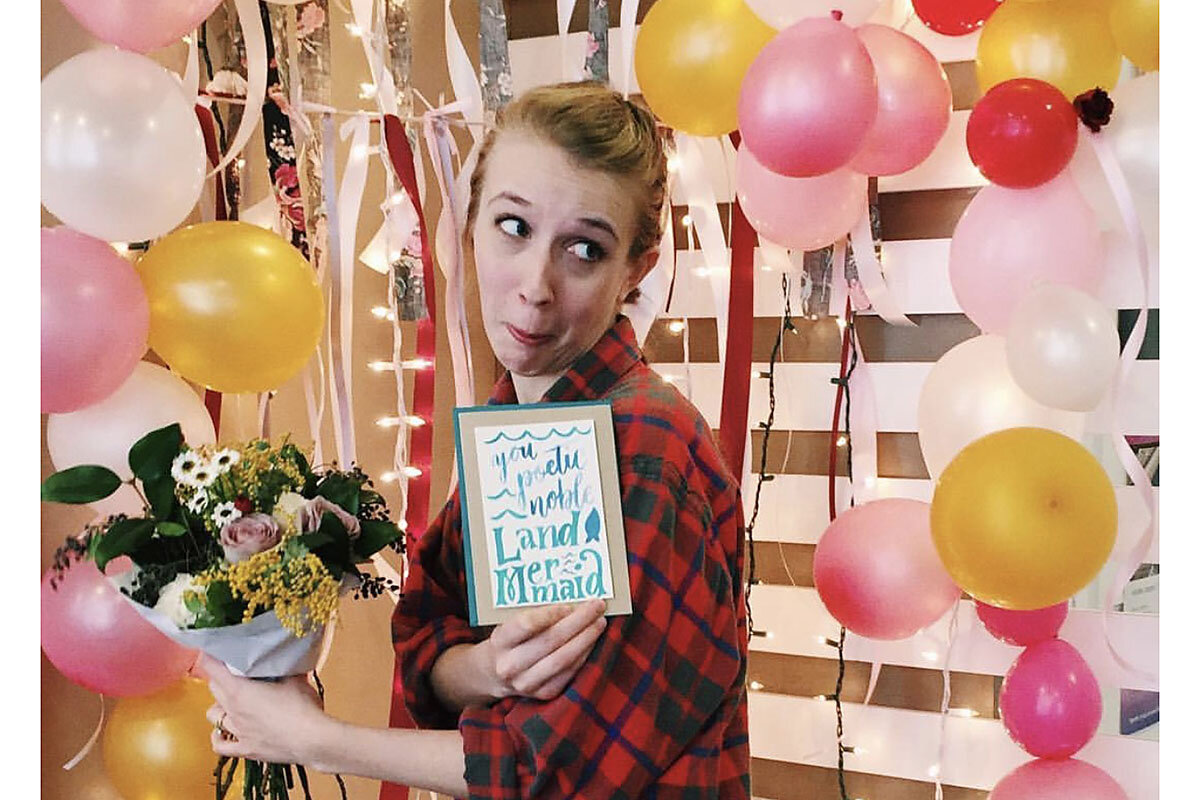Holidays made up by TV shows may come and go, but today marks one that hasn’t lost its appeal: Galentine’s Day.
“What’s Galentine’s Day?” exclaims Leslie Knope, the cheerful main character from the NBC sitcom “Parks and Recreation,” in Season 2. “Oh, it’s only the best day of the year!”
Eight years after that episode first popularized the idea, celebrations of women’s friendship are taking place across the United States on and around Feb. 13. While the bubbly Ms. Knope (played by Amy Poehler) and her friends shared gifts and stories over breakfast, today’s festivities are held in museums and movie theaters, bakeries and bars – and often invite anyone, regardless of gender, to participate.
Not unlike other holidays, Galentine’s Day has been propelled along by commercial appeal. Eateries and book publishers are among those who keep the day alive and entice celebrants. But observers and those involved in the day note that an event that honors women and interpersonal connections is timely.
“I think especially right now in the world that it’s comforting to have that camaraderie going on…,” says Kari Redman, general manager of Cure Coffeehouse in Norfolk, Va., which hosted a celebration this past weekend for the third year in a row. “They love it,” she says of customer response.
Alicia Clancy, author of the 2017 book “Be My Galentine,” about the positive aspects of women’s friendships, sees an uptick in women’s empowerment influencing the rise of Galentine’s Day. She notes that five or 10 years ago, the environment felt more competitive between women, but that as more opportunities have opened up there’s more space for collaboration.
“[F]emale friendship, the concept of ‘girl tribes,’ and empowering each other, has really picked up and taken off and I think the current political situation is probably contributing to that a bit in that women are really striving for equality right now,” says Ms. Clancy. “I think we’ve learned as a gender that we’re going to have to stick together in order to achieve that.”
Real-life celebrations dreamed up by a group of TV writers may seem odd to some. But holidays and TV have long been linked. Festivus, the anti-commercialism day celebrated Dec. 23 by “Seinfeld” fans (including Republican Sen. Rand Paul of Kentucky), is still going strong. “Friendsgiving,” a Thanksgiving celebration with friends rather than family, is often attributed to another NBC sitcom, “Friends.” (But, as the researchers at Merriam-Webster discovered, the word actually has its origins elsewhere in culture.)
And look at the ubiquity of the phrase “Charlie Brown Christmas tree,” points out Daniel Gifford, an assistant professor of history at George Mason University in Fairfax, Va. “The idea that, well, this came from a television show, so it’s not really real or it’s not really important, I actually don’t buy that…,” says Professor Gifford, who has taught courses including “American History through its Holidays.” “This is just another form of cultural expression.”
Galentine’s Day may have an advantage in that it lends itself more naturally to celebration than, say, the “feats of strength” portion of Festivus. Knope, on “Parks and Recreation,” explained her Galentine’s Day ritual this way: “Every Feb. 13th, my lady friends and I leave our husbands and our boyfriends at home and we just come and kick it breakfast-style. Ladies celebrating ladies. It’s like Lilith Fair, minus the angst. Plus frittatas.”
The holiday gives those who are single or not interested in a dating relationship an alternative to Valentine’s Day. To Bruce David Forbes, professor of religious studies at Morningside College in Sioux City, Iowa, and author of works including “America’s Favorite Holidays: Candid Histories,” Galentine’s Day is similar to Thanksgiving. With Thanksgiving, the focus is on the relationship with one’s family. For Galentine’s Day, it’s on the relationships between women. In fact, Clancy says she had a yearly celebration with women friends around Valentine's Day that celebrated one another even before "Parks and Rec." They just didn't have a particular name for it.
At the Cure Coffeehouse, the festivities this past weekend included a special brunch menu based on the world of “Parks and Recreation” as well as giveaways and other diversions. For the event, the coffeehouse teamed up with For All Handkind, an organization that helps those who are new to the world of handcrafted goods, creating a “crafternoon” where patrons had the opportunity to make glass wall hangings. (Knope likely would approve: She offered her “Parks and Rec” ladies a gift bag that included handcrafted crocheted pens and mosaic portraits made from shards of bottles of their favorite diet soda.)
A few states away, Sloan*Longway, a museum and planetarium in Flint, Mich., celebrated its third Galentine’s Day on Feb 9. It welcomed patrons for an evening event that included karaoke, various shopping opportunities, and a photo booth.
“It’s just a fun night out…,” says Olivia Kushuba, the venue’s special events manager. “It’s a fun way to hang out with your friends while still getting to get pampered and shop. It’s just a unique way to spend time with your friends.”
Although Dr. Forbes says he doubts Galentine’s Day will still be celebrated in a decade, its future will likely depend on the fervor of fans. “Festivus” hit the 20-year mark last year, for example. And Gifford, in a post-interview email, explains, “[S]o many holiday traditions put a lot of work and labor onto women’s shoulders. This seems to do less of that, and may actually be popular and have longevity because of that.”
For Rachel Heffington, who attended Cure Coffeehouse’s Galentine’s Day celebration with a group the past two years, the appeal of the new holiday is simple.
“It was mostly women and we were just all having a great time with our various friends and sisters,” says the 20-something food blogger. “I loved the spirit of it. It was so supportive and instead of women comparing each other, we were just all there together, having fun, celebrating our friendship.”





